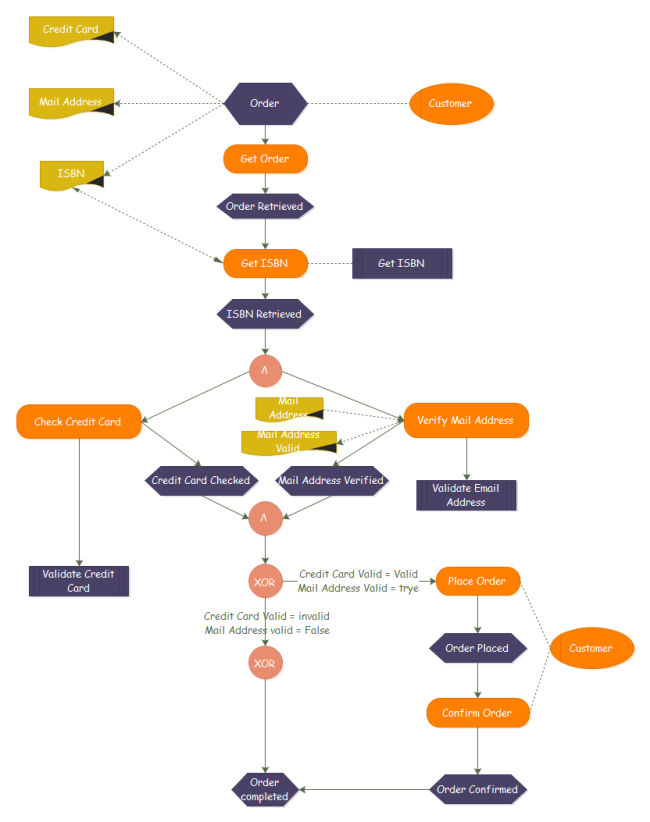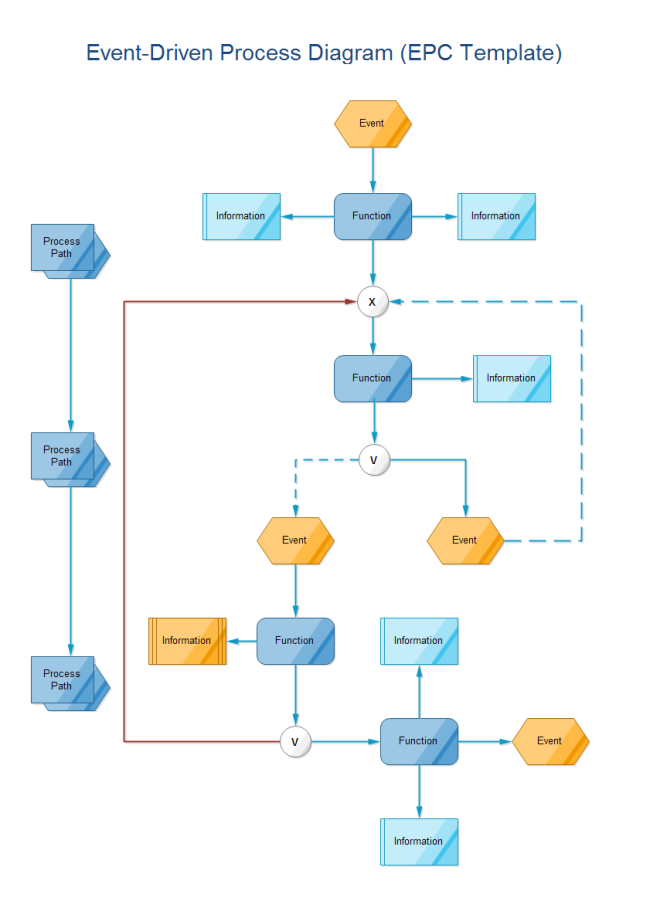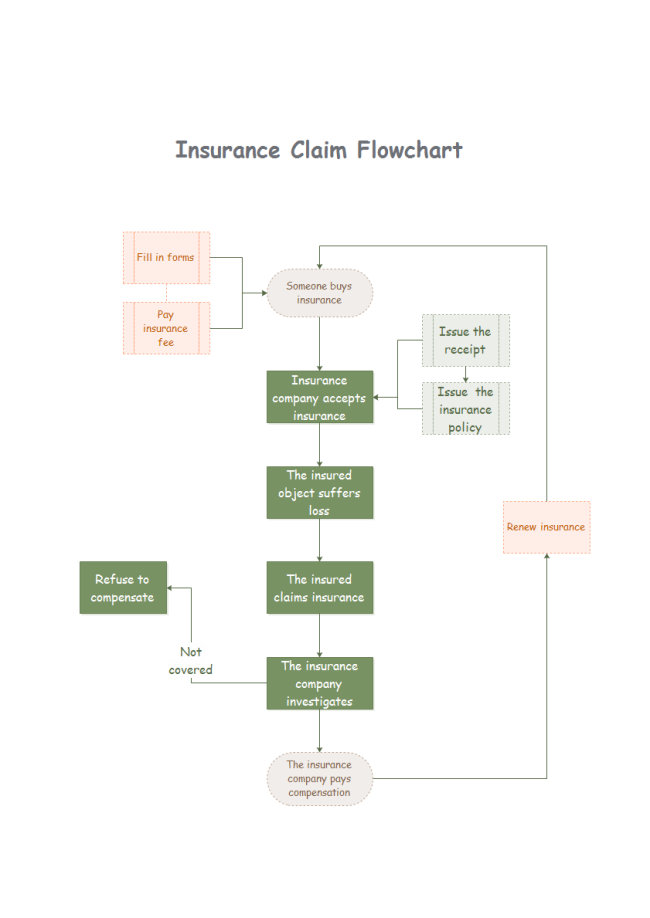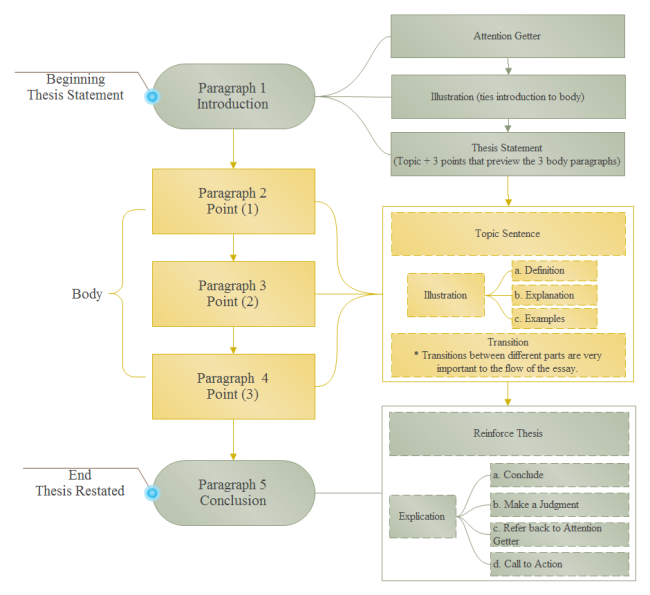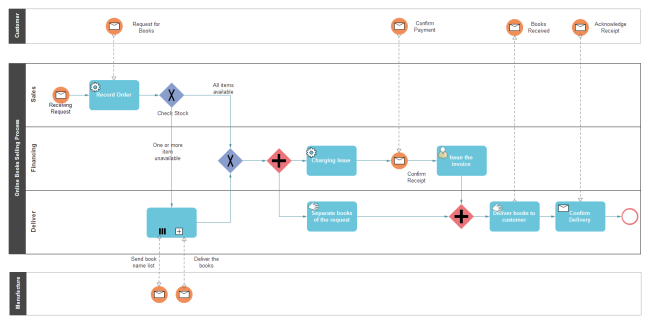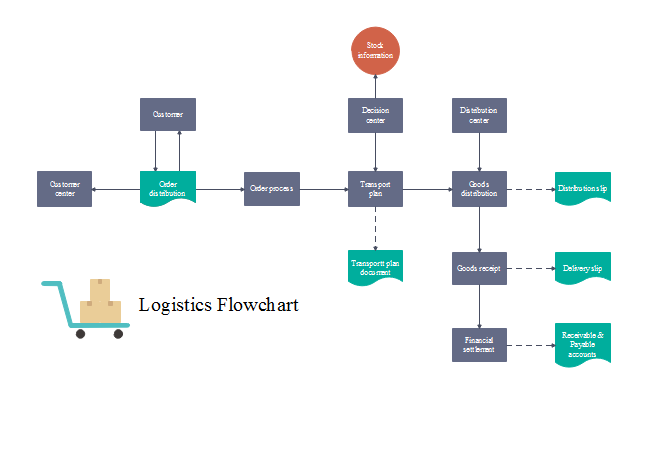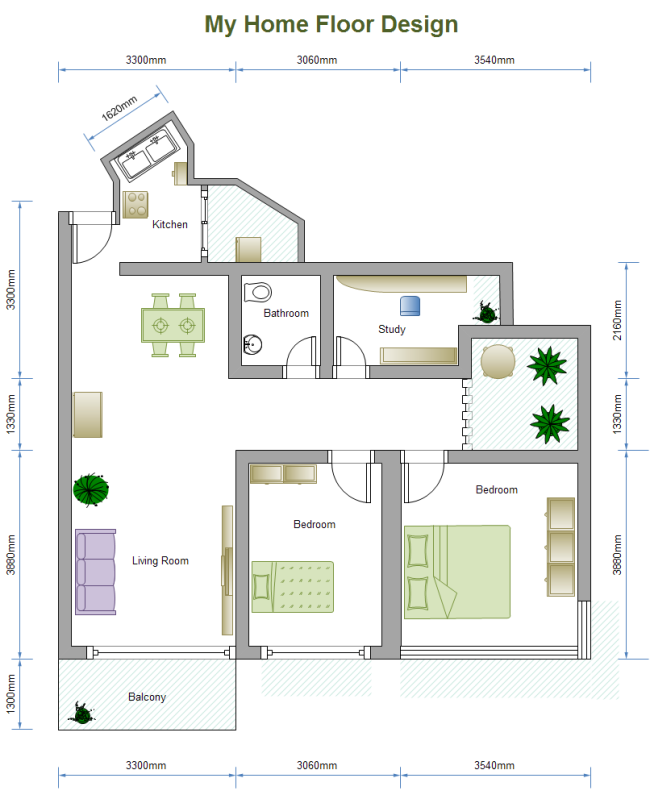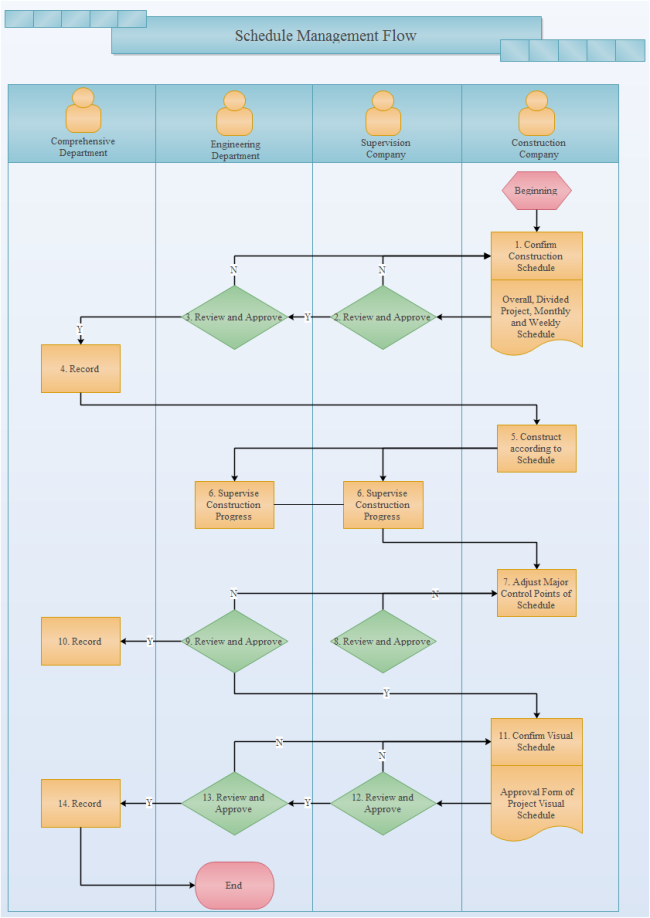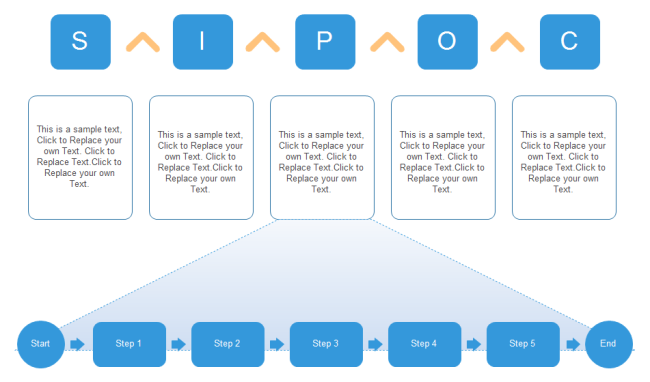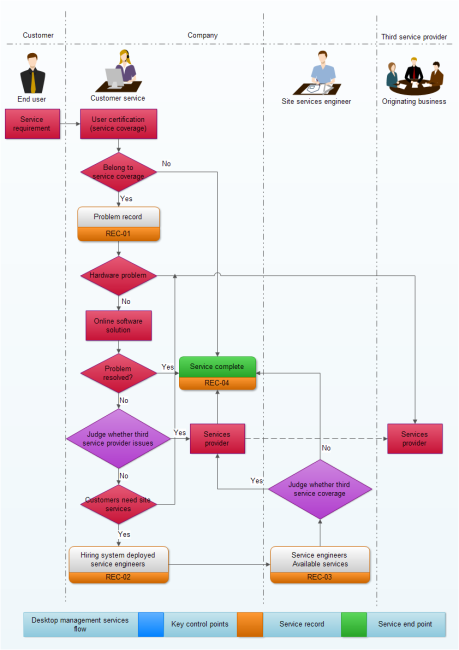Business Workflow Diagram: Definition, Examples, Tips
Edraw Content Team
Do You Want to Learn More about Business Workflow Diagram?
EdrawMax specializes in diagramming and visualizing. Learn from this article to know everything about what is business workflow diagram, business workflow examples, tips of creating business workflow diagram!
Using visualization can be a beneficial tool for understanding your business operations better. As a result, your processes become clearer and simpler to comprehend and analyze. One of the most used visualization techniques is the workflow diagram. It is easy to create, read, and learn.
Look at an example shared below.

This image depicts the business overview step-by-step. Thus, it helps everyone to understand how we start and reach our goals within a given timeframe. Isn't it? Let us understand the business workflow diagram, its types, examples, and lots more.
1. What is a Business Workflow Diagram
A workflow is the series of actions required to complete the task. However, the business workflow diagram visually represents the business workflow. Each step in the Workflow has a specific value using shapes and symbols. It appears as the standard of your business at what point you will begin, stop, and last. A business workflow chart helps employees understand their roles and complete their tasks accordingly.
Workflows are used in many industries to make things easier to understand. However, designing a workflow is complicated as you need to be concise in each step. So, taking help from business flow diagram online tools might resolve your stress.
Despite these, there are lots more benefits of working with workflow diagrams. Let's see below:
- Boost speed
- 100% quality assurance
- Standardization
- Workplace satisfaction
- Rooms for improvement
2. Main Types of Workflow Diagrams and Examples
Various workflow diagrams are available. But here, we are sharing the most used types of workflow diagrams with suitable examples. Let's go!
2.1 ANSI Flowchart
Various workflow diagrams are available. But here, we are sharing the most used types of workflow diagrams with suitable examples. Let's go!
- ANSI Flowchart function-ANSI is used for displaying algorithms and portraying systems. This works without revealing the nature of their underlying algorithms.
- Best For-workflow management and preparing documents.
2.2 Swimlane Diagram
Swimlane is another most used flowchart in business to process from start to finish. Also, it introduces several categories that help employees to understand their jobs perfectly. Simply, it presents a high-quality view of the work process.
- Swimlane flowchart function-It aids in pinpointing the bottlenecks in a process. Also, the department in charge of each one during any process improvement endeavor. The Swimlane diagram helps to define duties and help departments work together.
- Best For-BPM automation, ERP, customers, and company sales.
2.3 Business Process Modeling Notation (BPMN)
BPMN flowchart is quite similar to the unified modeling language flowchart. It is used to present the order process. It uses a common language for business and technical users, focusing on techniques and information.
- BPMN Flowchart functions: BPMN flowchart improves efficiency or gains a competitive advantage. This method has been in use for recent years and has gained a lot of value in the market.
- Best for: Businesses and stakeholders to understand the business deeply.
2.4 UML Diagram
Unified Modeling Language is the most common diagram. It is used by businesses to represent architectural designs. Plus, it gives stakeholders a complete overview of the system and lots more. Also, UML diagrams are called activity diagrams.
- UML Diagram Function: a specific kind of UML diagram that can take the role of flowcharts. They offer a more consistent method of modeling workflows. Also, a broader selection of elements to increase readability and effectiveness.
- Best for: business, stakeholders, architectures, etc.
2.5 SIPOC Diagram
SIPOC (Supplier input process output customer diagram) represents the Workflow between input and output. Therefore, it is a high-quality view of presenting the information.
- SIPOC Diagram Function: It is a well-known quality-management tool used in process improvement models. The graphic is excellent for determining the reasons behind process variance. It can measure and control these variances to achieve a more stable and predictable process.
- Best for: Management, electrical contractors, line operators, car dealers, and companies.
3. How to Create a Workflow Diagram
So, are you ready to make your workflow diagram? Here’s what you should know before getting started.
The first and foremost step is to check what process you will need to work on and why. With this better idea, you would know what kind of diagram you should choose for your audience. For example, if your audience is non-technical, BPMN is the best to go.
Note- It's also crucial to say whether your Workflow represents a process or a procedure you intend to execute in the future.
Another important thing you must check is the start and end points. Here you need to make sure you know your goals.
To ensure your process is as accurate as possible, talk to various people and departments and obtain information. List the activities involved in each phase and indicate who is responsible for making these choices or carrying out these duties.
Note- Make a note of process deadlines, deviations, potential bottlenecks, and advancements.
Next, sort your duties into "must-have," "helpful," "good to have," and "not necessary" categories. Doing this may simplify your Workflow and distribute tasks to the right team members. Recall your overall goal and the firm's overall goal when classifying tasks. Does a certain task advance this objective? Consider adding it to the "not necessary" bucket if it isn't.
Now, it's time to give your Workflow a complete design with lovely visuals. Again, take the help of a business workflow diagram online tool, and your flowchart will be neat, clean, easy to understand, and easy to edit.However, using EdrawMax can help you unlock diagram possibilities. This is an all-in-one diagramming solution that turns your ideas into reality and clears the complexity in the diagram. Additionally, creating a diagram with EdrawMax is easy. Choose the template and make the required edits.
Before presenting a flowchart to anyone, it is important to check the bottlenecks and improve efficiency. So you could get the most out of business workflow diagrams.
4. Business Workflow Diagram Tips
Follow the recommended tips to make the most out of the workflow diagram.
- Must check out the major components of the diagram.
- Pick the right symbols to show the activity.
- Review the diagram and make the required changes.
- Make sure the activities and symbols are connected.
The Bottom Line-So, that's all! A business workflow diagram is the most required process that helps users to understand who you are. So, let's draw a business workflow chart with EdrawMax for fantastic visuals, including color, design, and font styles. Good luck!

Workflow Diagram Complete Guide
Check this complete guide to know everything about the workflow diagram, like workflow diagram types, workflow diagram symbols, and how to make a workflow diagram.
You May Also Like
Getting Things Done (GTD) Flowchart
Knowledge
How a Bill Becomes a Law Flowchart
Knowledge
What is Mesh Topology
Knowledge
